Main menu
Common skin conditions

NEWS
Join DermNet PRO
Read more
Quick links
Tinea faciei — extra information
Tinea faciei
Last Reviewed: July, 2024
Created 2003; updated by Dr Ian Coulson, Dermatologist, United Kingdom (2024).
Edited by the DermNet content department.
What is tinea faciei?
Tinea faciei is the name used for infection of the face with a dermatophyte fungus. It does not include infection of the beard and moustache area, which is called tinea barbae. Tinea faciei is uncommon and often misdiagnosed at first.
Tinea faciei can be due to an anthropophilic (human) fungus such as Trichophyton rubrum (T rubrum). Infection often comes from the feet (tinea pedis) or nails (tinea unguium) originally. Zoophilic (animal) fungi such as Microsporum canis (M canis) is acquired from cats and dogs, and T verrucosum, from farm cattle, are also common.
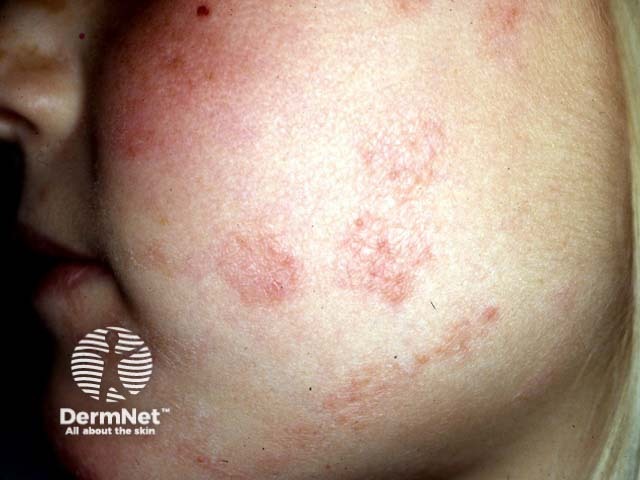
Tinea faciei

Tinea faciei
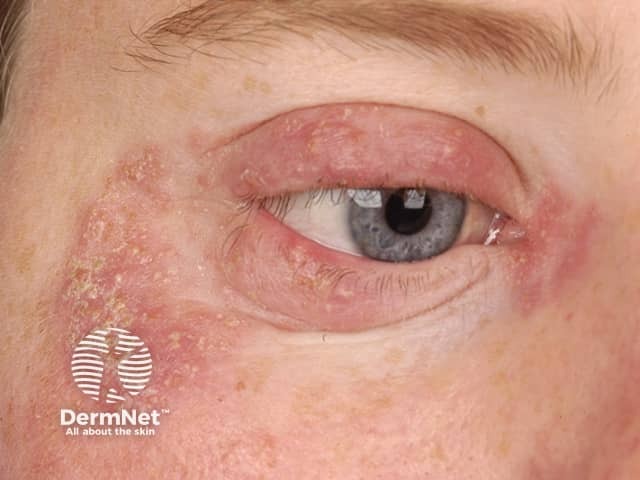
Tinea faciei
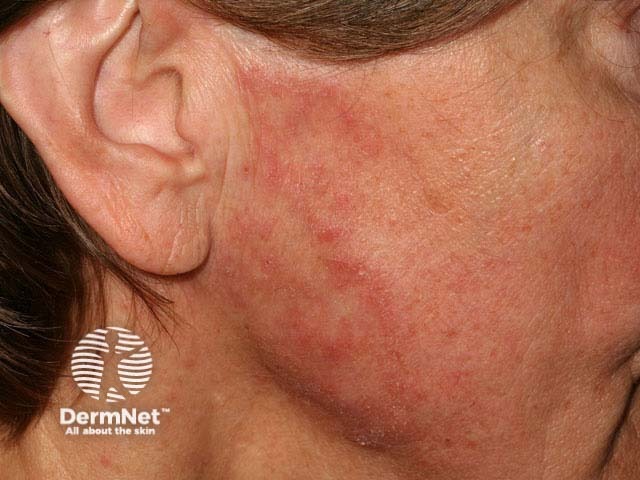
Tinea faciei
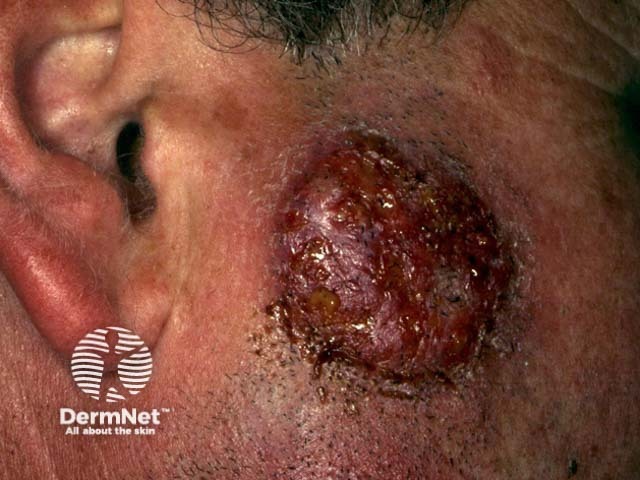
Kerion
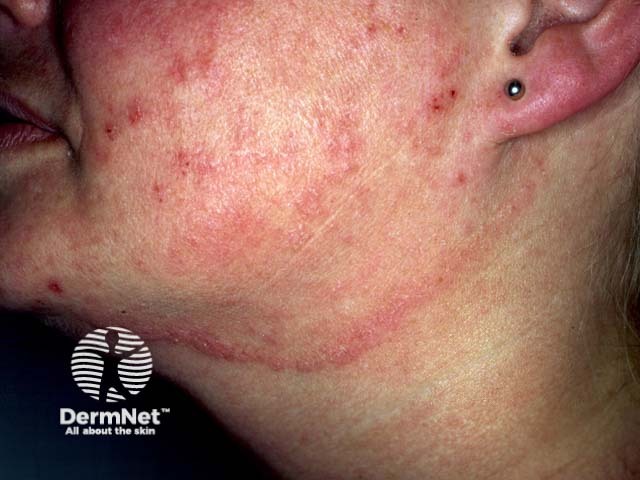
Tinea faciei
Clinical features of tinea faciei
Tinea faciei resembles tinea corporis (ringworm). It may be acute (sudden onset and rapid spread) or chronic (slow extension of a mild, barely inflamed, rash). There are round or oval red scaly patches, often less red and scaly in the middle or healed in the middle. Lesions are usually asymmetric and it is often unilateral. It is frequently aggravated by sun exposure. It may also present as a kerion (fungal abscess).
It is essential to look for and treat tinea infection elsewhere (look at the feet, groins, and nails) and in a suspected zoophilic infection, identify, isolate and treat the source animal.
Tinea faciei is often misdiagnosed as a non-fungal condition such as:
- Atopic dermatitis
- Seborrhoeic dermatitis
- Psoriasis
- Rosacea
- Actinic keratoses
- Contact allergic dermatitis
- Perioral dermatitis
- Cutaneous lupus erythematosus
- Polymorphous light eruption
Misdiagnosis is particularly common in those treated with topical steroids or oral steroids (tinea incognita).
Diagnosis of tinea faciei
The diagnosis of tinea faciei is confirmed by microscopy and culture or PCR of skin scrapings.
Treatment of tinea faciei
Tinea faciei is usually treated with topical antifungal agents, but if the treatment is unsuccessful, oral antifungal medicines may be considered, including terbinafine and itraconazole.
In recent years, antifungal drug resistance has made treatment more challenging.
On DermNet
- Tinea
- Introduction to fungal infections
- Laboratory tests for fungal infections
- Treatment of fungal infections
Other websites
- Fungal infections of the skin — DermNet e-lecture [Youtube]
- Tinea faciei — Medscape Reference
